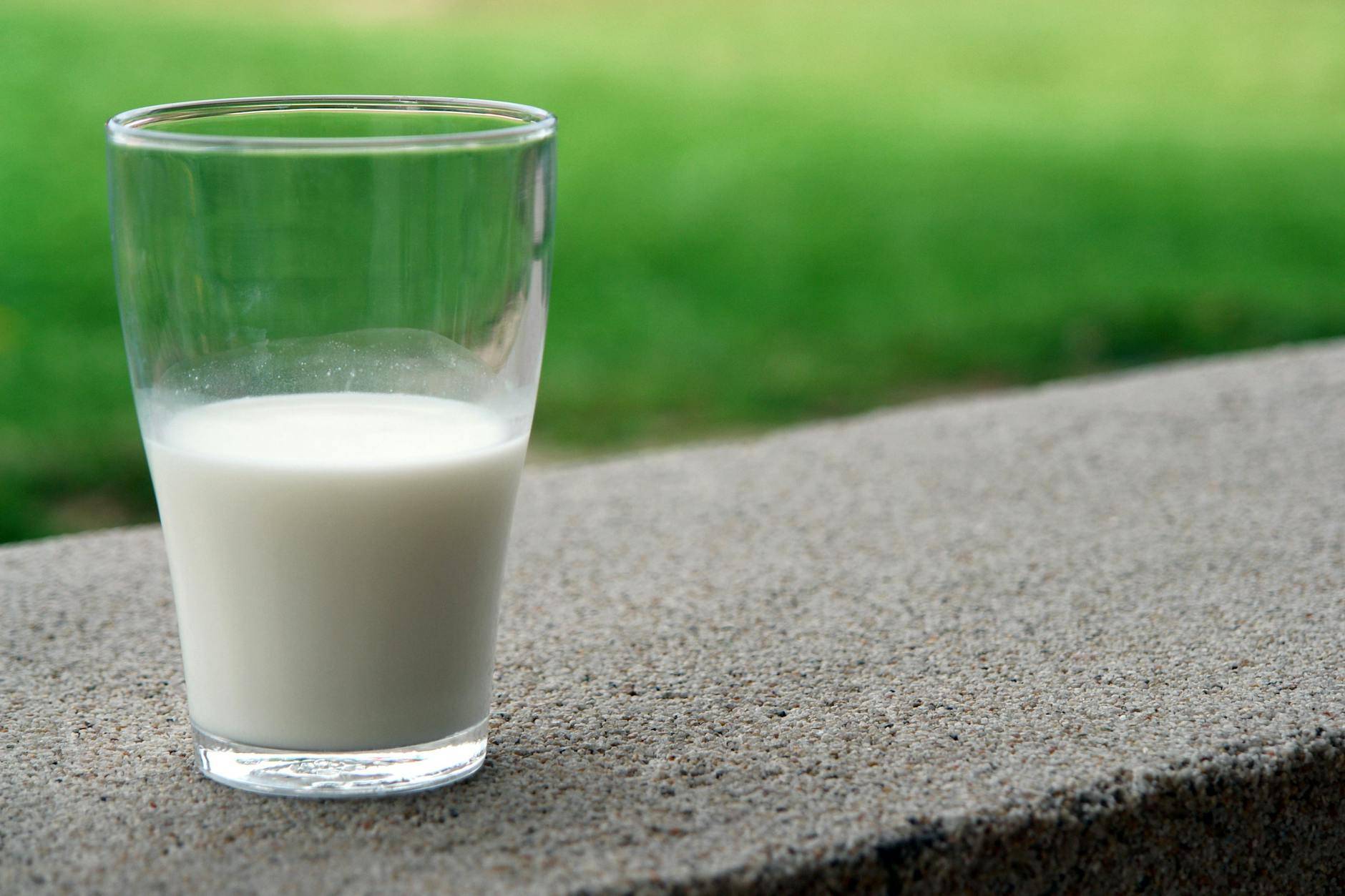Understanding Raw Milk
Before embarking on the journey to find the best raw milk farm, it’s vital to understand what raw milk is and the potential benefits and risks associated with its consumption.
What is Raw Milk?
Raw milk is milk that has not been pasteurized to kill harmful bacteria and pathogens. Pasteurization is a process that involves heating the milk to a specific temperature for a set amount of time to kill or slow the growth of bacteria. When milk is left in its raw form, it maintains its natural, unpasteurized state.
This lack of pasteurization gives raw milk a unique flavor that many people prefer over the taste of pasteurized milk. It’s often sought after by cheese makers, bakers, and food enthusiasts who value its richness and authenticity. However, it’s important to note that the consumption of raw milk is not without risks.
Benefits and Risks of Raw Milk
While some argue that raw milk is more nutritious than pasteurized milk, the primary benefit touted by proponents of raw milk is its taste. The absence of pasteurization preserves the milk’s natural flavors, resulting in a product that many find more complex and satisfying than its pasteurized counterparts.
However, the lack of pasteurization also poses significant health risks. Raw milk can contain harmful bacteria such as Salmonella, E. coli, and Listeria, which can cause serious illnesses. The consumption of raw milk has been linked to outbreaks of foodborne illnesses in several countries. According to the Centers for Disease Control and Prevention (CDC), between 1993 and 2012, there were 127 outbreaks linked to raw milk or raw milk products in the US, resulting in 1,909 illnesses, 144 hospitalizations, and 2 deaths.
Given these potential risks, it’s crucial to be informed and take necessary precautions when choosing to consume raw milk. Remember, the decision to drink raw milk is a personal one. If you’re considering adding raw milk to your diet, it’s important to weigh the potential benefits against the risks. Be sure to source your raw milk from reputable farms that follow proper safety measures. Explore our raw milk finder tool to help locate a reliable raw milk farm near you.
Regulations on Raw Milk
The legality and regulations surrounding raw milk, milk that has not been pasteurized to kill harmful bacteria and pathogens (Healthline), vary from country to country. Below, we delve into the legalities and regulations of raw milk in the US and Canada.
Raw Milk Legalities in the US
In the United States, the sale and distribution of raw milk across state lines are prohibited by federal law (CDC). However, within their borders, some states have their own regulations on the sale and distribution of raw milk. These regulations can be quite diverse, with some states allowing the sale of raw milk in retail stores, others permitting sales only directly from raw milk farms, and others banning the sale entirely.
Despite these regulations, it’s important to note that raw milk can carry harmful bacteria and other pathogens, including Salmonella, E. coli, and Listeria, which can cause serious illness and even death if consumed. Between 1993 and 2012, there were 127 outbreaks linked to raw milk or raw milk products, resulting in 1,909 illnesses, 144 hospitalizations, and 2 deaths (CDC).
Raw Milk Regulations in Canada
Unlike in the US, the sale of raw milk is prohibited nationwide in Canada (GetRawMilk.com). This ban extends to all raw milk products, regardless of their source. Despite these strict regulations, the country has seen several instances where raw milk rules were challenged.
For instance, Glencolton Farms, owned by Michael Schmidt, was raided for the fourth time on October 27th, 2021 (GetRawMilk.com). Additionally, raw milk hearings took place in November 2020, potentially paving the way towards the legalization of raw milk in Canada (GetRawMilk.com).
However, as it stands, raw milk remains illegal in Canada, with potential penalties for those who sell or distribute it. Before you consider buying raw milk in either the US or Canada, it’s crucial to understand the legalities and potential risks involved. To find out more about where you can buy raw milk in your area, use our raw milk finder.
Finding a Raw Milk Farm
For those who appreciate the authentic flavor of raw milk, finding a reliable raw milk farm is essential. Here’s what you should consider when choosing a farm and how to locate one near you.
Criteria for Choosing a Raw Milk Farm
It is important to evaluate a raw milk farm based on a few key factors to ensure safety and quality.
-
Hygiene Standards: Given that raw milk farms are often subject to less stringent regulations compared to conventional dairy farms, this can lead to a higher risk of contamination and foodborne illnesses. Therefore, it’s crucial to choose a farm that maintains high hygiene standards.
-
Animal Welfare: The health and wellbeing of the cows can significantly affect the quality of the milk. It’s important to choose a farm where the cows are well cared for, have access to clean water, and are fed a healthy diet.
-
Farm Practices: Farms that avoid the use of antibiotics and hormones in their cows are a better choice for raw milk. Look for farms that follow organic farming practices, which can result in healthier milk.
-
Testing Procedures: Regular testing for harmful bacteria such as Salmonella, E. coli, and Listeria is vital. These bacteria can cause serious illness or even death, so choose a farm that regularly tests their milk for safety (MSU Extension).
How to Locate a Raw Milk Farm
Finding a local farm that sells raw milk can be a challenge due to the regulatory landscape. However, there are several resources available to help you locate a reliable source:
-
Online Directories: Websites such as our raw milk finder can help you locate raw milk farms near you. You can search by location to find a list of farms in your area.
-
Farmers Markets: Farmers markets often have stalls from local dairy farms selling raw milk. This also gives you the opportunity to speak directly with the farmers and ask about their farming practices.
-
Local Co-ops and Health Food Stores: Some local co-ops and health food stores sell raw milk from local farms. Check with the store manager to find out if they carry raw milk and where it comes from.
-
Direct from the Farm: If you live in a rural area, you may be able to buy raw milk directly from a farm. Use our raw milk farm near me tool to find a farm in your vicinity.
Always remember to do your own research before purchasing raw milk. Understanding the potential risks and the importance of choosing a reputable source will ensure you enjoy the rich, creamy taste of raw milk in the safest way possible.
Safety Measures for Raw Milk Consumption
Given the inherent risks associated with the consumption of raw milk, it is imperative that individuals take the necessary precautions. From understanding the potential dangers to being aware of past and current raw milk outbreaks, being informed is key.
Precautions for Raw Milk Use
Raw milk can carry harmful bacteria like Salmonella, E. coli, and Listeria, which can cause severe illness and potentially even death if consumed (Healthline, CDC). Therefore, it’s essential that consumers take appropriate safety measures when handling and consuming raw milk.
Firstly, always ensure that the raw milk is sourced from a reliable raw milk farm that adheres to proper sanitation and animal health standards. Before making a purchase, inspect the milk for any off smells, discoloration, or separation, which could indicate contamination.
Secondly, while raw milk should be consumed as fresh as possible to reduce the risk of bacterial growth, it should also be properly stored. This involves keeping the milk at a temperature below 40°F (4°C) to inhibit bacterial multiplication.
Thirdly, always wash your hands and any equipment or surfaces that come into contact with raw milk. This can help to prevent the spread of bacteria.
Lastly, consider your personal health status. Raw milk may pose a higher risk to those with weakened immune systems, including the elderly, pregnant women, children, and individuals with chronic illnesses.
Past and Current Raw Milk Outbreaks
The consumption of raw milk has been associated with outbreaks of foodborne illnesses in several countries. Even with precautions, there are still risks linked to consuming raw milk.
Between 1993 and 2012, there were 127 outbreaks linked to raw milk or raw milk products in the United States, resulting in 1,909 illnesses, 144 hospitalizations, and 2 deaths (CDC).
| Year | Number of Outbreaks | Illnesses | Hospitalizations | Deaths |
|---|---|---|---|---|
| 1993 – 2012 | 127 | 1909 | 144 | 2 |
In countries like Canada, where the sale of raw milk is outlawed nationwide (GetRawMilk.com), outbreaks related to raw milk have been significantly reduced. However, this does not eliminate the risks associated with its consumption entirely.
For those still interested in consuming raw milk, it is crucial to remain informed about the risks and safety measures. Always source your raw milk from a reputable raw milk farm and follow proper storage and handling procedures to mitigate potential risks.
The Process of Raw Milk Production
Understanding the journey of raw milk from the cow to the consumer is crucial in appreciating the authenticity it offers. This section will detail the process of raw milk production and highlight the variations in the process that exist across different farms.
From Cow to Consumer: Raw Milk
The process of producing raw milk begins with the milking of cows. Unlike conventional milk, raw milk bypasses pasteurization and homogenization processes. Pasteurization is a method of heating milk to 72°C for no less than 15 seconds to destroy harmful bacteria and micro-organisms, and then cooled immediately, which also extends the shelf life of milk. Homogenization, on the other hand, is a process where milk is put under pressure through fine nozzles, evenly dispersing fat globules and preventing the cream from separating and rising to the top.
Raw milk is typically taken straight from the cow and cooled to a low temperature to maintain its freshness and prevent the growth of harmful bacteria. Once cooled, the milk is bottled and ready to be delivered to consumers directly from the raw milk farm.
Variations in the Raw Milk Process
There are several variations in the raw milk process, depending on the specific practices and technologies employed by each raw milk farm. Some farms may choose to use centrifugal separation to remove some or all of the cream from milk, resulting in reduced-fat, low-fat, or skim milk. Skim milk solids can be added back to improve the taste and texture, as well as increase nutrients like protein and calcium.
Ultrafiltration is another process that some farms may utilize. In this process, milk is moved across a membrane under moderate pressure, which holds back protein, fat globules, and a large amount of calcium complexes. Water and lactose (the sugar in milk) pass through, leaving behind a protein and calcium-rich product. The fat content can be adjusted to suit consumer preference.
On the other hand, some raw milk farms may choose to process their milk into powdered form through a method called spray drying. This method removes water from milk to make powdered milk products. Notably, the nutritional value of milk remains the same after the spray drying process.
The variations in the raw milk process across different farms provide a range of options for consumers looking to enjoy the authentic flavor of raw milk. Whether you prefer your milk with a creamier texture or a lower fat content, there’s a raw milk farm out there that can cater to your preferences. Explore our raw milk finder to locate a raw milk farm near you.
Raw Milk in Different Countries
Raw milk production and consumption varies from country to country, with different regions having unique practices, regulations, and cultural attitudes towards this natural product. In this section, we’ll explore raw milk production in two different regions: Europe and Australia.
Raw Milk Production in Europe
Europe is the largest producer of cow milk globally, accounting for a significant portion of the almost 716 million tonnes produced in 2019. Some of the largest producers within the EU include Germany, France, the United Kingdom, the Netherlands, Poland, and Italy (Source).
Organic milk production has seen dynamic growth in the EU, reaching 5.52 million tonnes in 2019. Today, nearly 3.3% of milk produced in the EU is organic. The leading producers of organic milk in the EU as of 2019 were Germany, France, Denmark, Austria, The United Kingdom, and Sweden.
Raw milk from organic farms is particularly valuable due to its higher content of health-promoting compounds, including vitamins, fatty acids, whey proteins, and minerals. This is largely due to the fact that animals in organic farming are kept in pastures, allowing for a more natural diet (Source).
However, the hygienic quality of raw milk, especially from organic farms, raises concerns. To ensure the safety and quality of raw milk, organic milk producers should be supported with consultancy and training in Good Hygienic Practices. For those wondering where to buy raw milk in Europe, our raw milk finder can assist.
Raw Milk Production in Australia
The raw milk industry in Australia has seen significant growth in recent years, driven by consumer demand for more natural and unprocessed food products. However, due to strict food safety regulations, the sale of raw cow’s milk for human consumption is currently illegal in Australia. Despite this, raw milk products are still available, but they are treated to kill harmful bacteria.
One common method of treatment is the use of a process known as cold pressure, which applies high pressure to kill bacteria without the need for heat. This allows the milk to retain its raw characteristics while ensuring it is safe for consumption.
In response to consumer demand, a number of raw milk dairies have emerged in Australia, offering a variety of products including raw goat’s milk, raw milk cheeses, and raw milk kefir. These products are popular among those seeking a more natural diet, and they can be found in many health food stores and farmers’ markets across the country.
Remember to always consider safety precautions when consuming raw milk. Our guide on precautions for raw milk use provides useful information on this topic. For those looking to buy raw milk products in Australia, our raw milk delivery and raw milk farm near me pages may be of assistance.




Leave a Reply